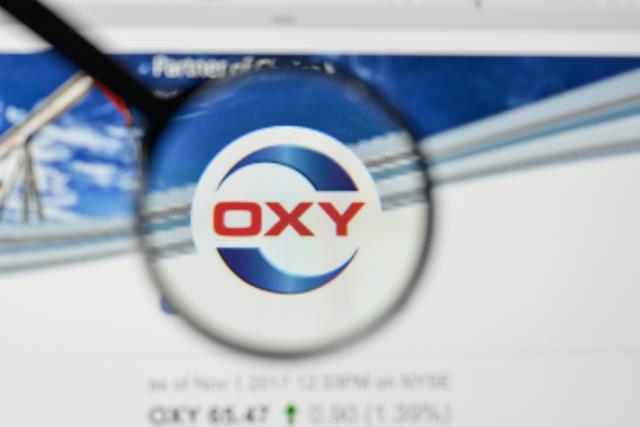
Editor's note: Opinions expressed by the author are his own.
With Chevron Corp. deciding to throw in the towel, mighty mini-major Occidental Petroleum Corp. is the winner in the multibillion-dollar acquisition of The Woodlands, Texas-based Anadarko Petroleum Co. Of course, the $10 billion investment from Warren Buffett created a higher cash percentage as did an agreement by Total to kick in over $8 billion in return for Anadarko’s massive African LNG properties.
For the determined Vicki Hollub, president and CEO of Occidental, the deal is a major coup and vaults her company into a prime position in the prolific Permian Basin. For Chevron, it’s merely a matter of waiting for the next lucrative deal that enables it to keep its promise to produce 1 million barrels per day in the Permian. It can also take to the bank the $1 billion breakup fee that Occidental will pay for Anadarko.
The back-and-forth negotiations fascinated industry observers, especially here in Houston, although it was no secret that Anadarko was at play. I wanted to learn about some of the intricacies involved, so I called a couple of expert energy consultants for their perspectives, Steve Hendrickson, president of Ralph E. Davis Associates, and Bill Arnold, professor in the practice of energy management at Rice University’s Jones Graduate School of Business. Previously, he was Royal Dutch Shell's Washington director of international government relations and senior counsel for the Middle East, Latin America and North Africa.
RELATED ARTICLES: Chevron Bows Out Of Anadarko Takeover Battle With Occidental Petroleum; 'We Are The Rightful Owners' Of Anadarko, Occidental CEO Tells Shareholders; Occidental, Anadarko Petroleum Make It Official With Merger Agreement; How Total's CEO Pounced On Anadarko's African Energy Assets;
My first question led with a conclusion: What is generally the deciding factor as to how these offers are generally decided?
“Obviously, the boards of the companies are tasked with making certain that whatever they do is in the best interest of the shareholders,” Hendrickson said. “The challenge can be that different offers may benefit the shareholders in different ways which can cause difficulty in comparing them. For instance, in an all-cash offer vs. an all-stock offer, you can’t strictly look at just the valuation because if you take an all-stock offer, you’re essentially taking the sale proceeds and reinvesting them into the acquiring company.
“For some buyers and sellers that works out well,” Hendrickson continued. “Some sellers may like the opportunity to continue to participate in the company and think the combined company will be able to do even better than their company could have done on its own, so they may be very happy to take a lot of stock.
“When we have a mix of stock and cash, we face concerns about valuation questions, the outlook for the business and the management team’s ability to execute that. That is, will the team that is going to be the go-forward management team be capable of executing the plan that extracts the greatest amount of value?”
Ultimately, Hollub’s offer made it clear that Occidental placed a greater value on Anadarko.

“Initially, [Occidental’s] offer had a large component that was stock and I believe that was a concern of the Anadarko board. Once Occidental made a few moves to be able to offer more cash, the idea that Occidental made the superior offer is correct,” Hendrickson said.
Arnold agreed, suggesting the deciding factor in many deals such as this is the likelihood that it will close in a reasonable of time and what constitutes the final total offer, cash versus stock.
Meanwhile, he said a large independent like Anadarko has plenty of reasons to attract a major and drive the price that it wants.
”Anadarko is a fine company with good operations and staff,” Arnold said. “The focus is on the operational synergy in the Permian, especially after Chevron committed to producing a million barrels per day there. I wonder how Chevron saw the Mozambique asset. Oxy acted to be rid of it but Chevron has a huge international LNG portfolio. Did they want another large asset?”
Hendrickson said major integrated companies have their priorities when sizing up a potential acquisition.
“First, they’re always looking for things that have scale. If they’re going to go through the pain of dealing with a big transaction, they want to ensure that it will be meaningful to their long-term growth. Anadarko has had a certain size that even 20 years ago it was frequently mentioned as a target because it was in that sweet zone that it wasn’t so big a very large independent that would be meaningful for any major company to acquire.
“Anadarko was a very well-run company with good assets and talented people. So those would be folks that would be a welcome part of any major company, and many of the folks working at Anadarko already have major company experience,” Hendrickson said.
So, what are the biggest challenges in integrating a major with a large independent?
Hendrickson said any acquisition of size presents normal technical integration challenges.
“There are computer systems to be dealt with, organizational choices to be figured out, new reporting relationships, accounting systems that have to be integrated. That’s going to exist no matter what and presents a lot of challenges. It’ll probably take a year or two before it all gets worked out.
“But there are cultural challenges, too. I think there could have been some cultural differences between Chevron and Anadarko that are potentially greater than those between Occidental and Anadarko. Occidental and Anadarko appear to have similar styles and probably have a somewhat similar feel to them. They’re both very well-run companies. Occidental and Chevron place a premium on making sound technical decisions and Anadarko is the same.” Though Chevron is a much larger organization than Occidental, Hendrickson doubts that would have been a deal killer from Anadarko’s perspective.
Arnold is less sanguine about the eventual integration.
“Under the best circumstances the integration is painful because a key element is to reduce duplicate costs. They may want to retain technical professionals, but staff costs will be looked at hard. An unusual element here is the action Occidental has taken to avoid a shareholder vote. That could result in boardroom changes just as they begin the integration process. That would be very unusual.”
What comes next? Does Anadarko represent the first in a new wave of M&A activity? Hendrickson said many observers feel like the time is right for a consolidation, particularly at the small to midsize company level.
“If you said, ‘Anadarko is a very attractive target and now they’re being bid up to a 60%-plus premium, so how is the stock of similar companies reacting’? I haven’t seen a lot of stock movement that suggests the market anticipates that they are going to be good targets as well. I think there’s a lot of logic behind it, but I’m not sure the market is reflecting that yet.”
“This is a $2 question,” replied Arnold. “I don’t expect anything at this scale but there are many good independents. Over the last few years there was too great a gap between bids and offers.” He said that the major companies have come to appreciate the greater flexibility that independents possess. That was the driving force behind Exxon Mobil’s $41 billion purchase of XTO in 2009.
I’m curious about another piece of strategy. Many takeovers often result from a decision acquire another company’s reserves rather than continue with costly and riskier exploration and production activities. How does that fit in with interest in Anadarko?
“Good point,” Arnold said. “Rank exploration is the exception now and investors are increasingly averse to it because of the uncertainty. But at the same time, the buy-and- flip model in the Permian has lost steam. Investors want cash flow and returns over growth.”
“These companies do a lot of E&P activity, so they’re not really trying to avoid that,” said Hendrickson, a former employee with Shell Oil. “But, certainly, the fact that they could acquire a company that has done so and been successful presents the opportunity to take advantage of that.
“There are also the synergies that will exist when you merge companies. There is often the opportunity to work more efficiently, get better buying power, and let’s face it, there often are staff eliminations that reduce the combined cost of the organizations. You end up with something where one plus one is greater than two. That’s makes sense for the shareholders on both sides,” he said.
What does it all boil down to after apparently making an offer too good to refuse?
“The lingering question, if they win, is what [Occidental] will look like in three years,” said Arnold.
In a commentary Arnold wrote before our discussion, he noted how investor sentiment has shifted away from energy companies over the past year or so as they became disenchanted with growth that didn’t produce profits, cash flow or return of investment.
“The volatility of oil prices, fluctuating by 40% just since the first of the year, added to the challenge to value companies in the industry. Trying to assess what the Organization of Petroleum Exporting Countries and Russia would do in response to increasing U.S. production was at best challenging.
“But companies in the industry felt they could see value and deal with challenges that portfolio investors did not. This led Chevron to offer a nearly 40% premium for Anadarko, only to see Occidental counter with a more generous offer.
“Buffett, who had shunned the industry, spotted opportunity. With a war chest of more than $100 billion, his $10 billion adds heft to Occidental’s bid—but at a high cost. Occidental will have to pay Berkshire Hathaway $800 million per year for at least 10 years. And Buffett’s organization also negotiated the right to acquire up to 80 million shares of common stock at $62.50 per share, just above the current market value.
“Occidental countered with an even larger offer before Buffett entered the picture. One stated explanation for Occidental's decision to accept his offer is that the firm would need to sell fewer new shares (using Berkshire Hathaway cash), and it would not be required to get approval from its shareholders to consummate the deal. This has caused an uproar by some institutional and individual investors [including its sixth-largest investor, T. Rowe Group, which has said it will vote against the proposed acquisition],” Arnold said.
Recommended Reading
Green Swan Seeks US Financing for Global Decarbonization Projects
2024-02-21 - Green Swan, an investment platform seeking to provide capital to countries signed on to the Paris Agreement, is courting U.S. investors to fund decarbonization projects in countries including Iran and Venezuela, its executives told Hart Energy.
Air Products Sees $15B Hydrogen, Energy Transition Project Backlog
2024-02-07 - Pennsylvania-headquartered Air Products has eight hydrogen projects underway and is targeting an IRR of more than 10%.
First Solar’s 14 GW of Operational Capacity to Support 30,000 Jobs by 2026
2024-02-26 - First Solar commissioned a study to analyze the economic impact of its vertically integrated solar manufacturing value chain.
TechnipFMC Eyes $30B in Subsea Orders by 2025
2024-02-23 - TechnipFMC is capitalizing on an industry shift in spending to offshore projects from land projects.
SunPower Begins Search for New CEO
2024-02-27 - Former CEO Peter Faricy departed SunPower Corp. on Feb. 26, according to the company.





